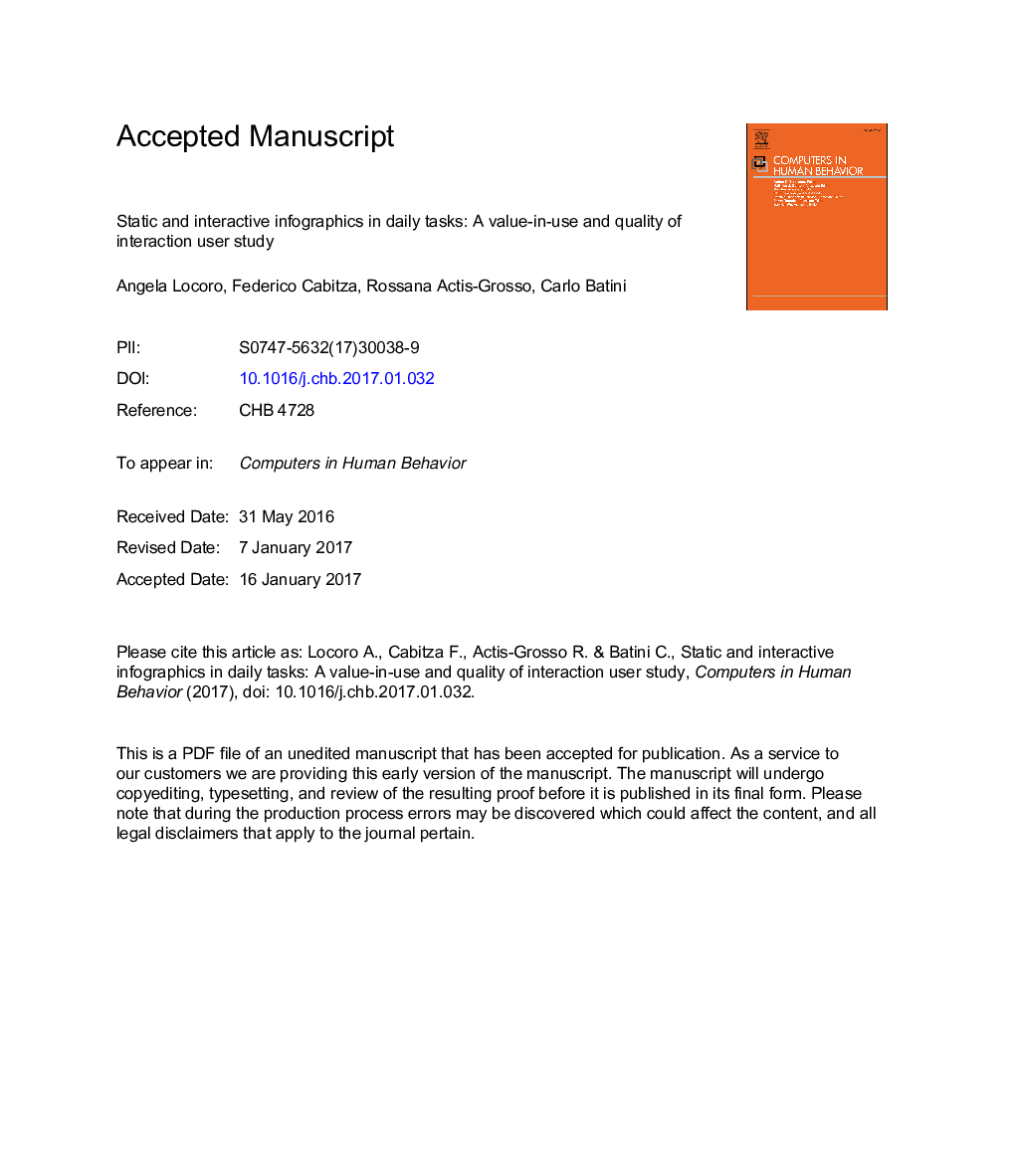| Article ID | Journal | Published Year | Pages | File Type |
|---|---|---|---|---|
| 4937359 | Computers in Human Behavior | 2017 | 53 Pages |
Abstract
Infographics are a common visual means to inform users. This paper investigates how lay people of different age, gender and educational background perceive the use of infographics for information visualization in daily tasks. We chose three topics of general interest: weather, study and work and three infographics, one for each topic. We administered a questionnaire to people randomly split in two groups: the first group interacted with a static version of each infographic, i.e., a snapshot of it; the second group interacted with the fully configurable infographics. We aimed to assess information quality on different dimensions, to take into account both formal and substantial aspects; interaction quality along dimensions like usability and ease of use; and design quality on the dimensions of the Visualization Wheel by Cairo, to assess the trade-off between information complexity and aesthetics of infographics. The goal was to measure whether the quality of infographics affects the perception of information and the users' interaction. The overall results suggest that, although interactive infographics are perceived as more complex, the experience with them is better. From our observations, we derived a model to assess the overall quality of static and interactive infographics, based on information, interaction and design quality dimensions.
Keywords
Related Topics
Physical Sciences and Engineering
Computer Science
Computer Science Applications
Authors
Angela Locoro, Federico Cabitza, Rossana Actis-Grosso, Carlo Batini,
